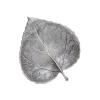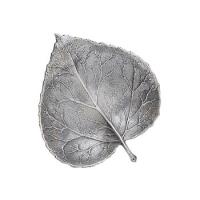source = the internetto be more specific, https://hbd.org/hbd/archive/3090.html which has a few other references to Hall, JIB, etc.What is your source for that chart? Good information none-the-less.

High gravity finishing
#41

Posted 13 May 2009 - 11:41 AM
#42

Posted 13 May 2009 - 02:41 PM
Um, does it have a scale? What's the maximum temp it reads?Using at standard glass dairy thermometer.
#43

Posted 13 May 2009 - 03:09 PM
That isn't nearly enough yeast, especially for a 1.068 lager. You want to pitch about double you would for an ale, about 1-1.5 million cells per mL per degree Plato of wort.I am getting consistently higher than normal finishing gravities, pretty much across all styles. See if you think of something I'm not. I just kegged up a lager that was in primary for 8 weeks. FG 1.020 from OG 1.068 using WL american lager yeast. All of my beers finish a little sweet (obviously) and even if I could get it down .003-.005...that would be all I'd need to accomplish. I guess I should also preface this by saying that I rarely brew a beer under 1.070 OG...so maybe I really don't have a problem, I just need to use yeasts more tolerant of higher alcohol contents. Though when I started and brewed kits, I could never get the OG reading on the box...always off by .003-.005...so that leads me to believe that there could be something I can tweak. Checked the hydromoeter for 1.000 reading with water.I have used both liquid and dry yeasts, liquid yeasts get a 1/2 gallon starter, starter OG 1.040-sih
#44

Posted 14 May 2009 - 03:41 AM
250FUm, does it have a scale? What's the maximum temp it reads?
Please note that I've dumped on yeast from a previous batch with the same high FG results. I guess I should also clarify that lager I had (2) 1/2 gallon starters....(1) for each 5 gallons in the 10gallon batch.MBThat isn't nearly enough yeast, especially for a 1.068 lager. You want to pitch about double you would for an ale, about 1-1.5 million cells per mL per degree Plato of wort.
Edited by Mainelybrew, 14 May 2009 - 03:42 AM.
#45

Posted 14 May 2009 - 05:08 AM
#46

Posted 14 May 2009 - 05:26 AM
That's kinda what has me stumped too. I just don't see where the issue lies. I truely thought it was a water issue...I have very, very soft natural water...but no real improvement after Plamer chap15. I'd like to know more about this copper poisoning. ....or is this another HSA debate?I am going to recheck my thermometer though....I can't see what else it is.oh...and why the low vote on stars?MB,I've re-read this and I honestly can't see anything wrong with your process.
Edited by Mainelybrew, 14 May 2009 - 05:27 AM.
#47

Posted 14 May 2009 - 07:12 AM
Mainely, next time we brew, perhaps send one of the 5 gallon carboys home with me? Then you have a split batch, with the only changed variable being fermentation temp. My primaries in my basement always ferment at 68That's kinda what has me stumped too. I just don't see where the issue lies. I truely thought it was a water issue...I have very, very soft natural water...but no real improvement after Plamer chap15. I'd like to know more about this copper poisoning. ....or is this another HSA debate?I am going to recheck my thermometer though....I can't see what else it is.oh...and why the low vote on stars?
No value in this thread?MB
#48

Posted 14 May 2009 - 10:10 AM
#49

Posted 14 May 2009 - 10:32 AM
I was thinking this, no disrespect to your ability to read a thermometer.But mine go from 20 to 180 °F. The marks are a bit more than a mm apart.One going to 250° gives smaller graduations, but I doubt that could be the problem.You would have to be 5+ °F off on you mash to get that kind of variance in FG.... I am going to recheck my thermometer though....I can't see what else it is. ...
#50

Posted 14 May 2009 - 10:45 AM
That's what I am tring to see if anyone knows. Is it the CuO2 that's bad for beer...or just the Cu.If you are nervous about oxidized copper contamination you can clean it up with some bar keeper's friend or any other oxalic acid cleaner.
Yes you are.I was thinking this, no disrespect to your ability to read a thermometer.
#51

Posted 14 May 2009 - 12:28 PM
#52

Posted 14 May 2009 - 12:51 PM
#53

Posted 14 May 2009 - 02:12 PM
Been at this hobby a while and understand the fermenting process. I can't quite agree with this assessment for my situation at least. My basement is just that. There is no heat supplied, there is no sunlight. It's the most constant temp area in the house...its a big temp-sink. Especially in the winter as the cold radiates through my hardwood floor to the main floor.I am a little skeptical of the copper link myself. My main thought here is that fermentation temperature is the culprit. Anytime someone's fermenting in a basement at whatever temp the room is at I get worried. I asked about the thermometer scale as it was calibrated at 212, which should be ok for a thermometer that reads up to 250.My money would go to temp control.
#54

Posted 14 May 2009 - 02:18 PM
Whipping up the mash and letting it stabilize is key. I usually take the temp over a few places after dough-in (underlet gets finished)...stir...wait 2 min...stir...wait 2min...stir...wait 2min take temp. I also use greenbayrackers strike water temp calculator...so I hit my desired strike temps consistently. The only thing would be if my thermometer is off. Meaning...my desired strike water should be 170 and I am actually getting 173sih. I don't know...that's why I want to relook there. That brings up another question...with underletting, it takes about 5-7min to get the water into the mash tun. During that process...there is quite a bit of grain that see's above 150ish temps as the rest of the bed wets...and then stabilizes in temp. Could that have anything to do with it?MBI use a cylindrical mash tun and I notice that at the beginning of the mash I can measure over 5dF difference in temperature depending on how deep I put the thermometer in the grain bed. I usually just go by what it reads at about 2 inches depth. I think it was already suggested, and I also think it would be a great idea to troubleshoot the problem by subtracting 5 to 10 degrees from your mash temp while keeping everything else in your process the same.
#55

Posted 14 May 2009 - 03:37 PM
This is exactly my point. It's at a constant temp. Different yeast strains all have different optimal temps. You'll never get the best performance from a yeast strain that ferments optimally at 68 degrees in a basement that's 50 degrees. This is what I mean by controlling your fermentation. Sorry if I wasn't clear.Been at this hobby a while and understand the fermenting process. I can't quite agree with this assessment for my situation at least. My basement is just that. There is no heat supplied, there is no sunlight. It's the most constant temp area in the house...its a big temp-sink. Especially in the winter as the cold radiates through my hardwood floor to the main floor.
I heat with a woodstove, so no heat gets down there. In the summer, it's 65ish at best. The only fluxuation it sees is humidity.MB
#56

Posted 15 May 2009 - 03:35 AM
Oh...I see. I thought you going after fluxuating temps. I dunno. I'll have to look at that once I recheck my thermometer and maybe pick up a different one with a lower high-point. I like fermenting cold for the better yeast profiles. MBThis is exactly my point. It's at a constant temp. Different yeast strains all have different optimal temps. You'll never get the best performance from a yeast strain that ferments optimally at 68 degrees in a basement that's 50 degrees. This is what I mean by controlling your fermentation. Sorry if I wasn't clear.
#57

Posted 15 May 2009 - 03:52 PM
There shouldn't be much-if-any attenuation difference from 1.25 qt/lb to 2 qt/lb. See Kai's experiments.I ferment at 60-62°F for a number of yeasts, including British yeasts, and get FGs of 1.010 and attenuation of 80% or more when mashing around 150°F. So, frankly I don't think that's the problem. That makes me wonder what your recipes are like. Are you adding a pound of Crystal Malt (Chocolate, Aromatic, etc) or a few pounds of Munich? Or are these the same recipes that used to give you lower FGs?Everyone's system has different conditions that are needed to get attenuation, and my 150°F mash might be equivalent to your 148°F mash, but don't underestimate the role of recipe formulation.I had been taught higher mash temp = less attenuation due to the more non-fermentable sugars created in the higher temp , thinner mash= more fermentable and dryer, less body. I'm not up on all the technical terms. For example: my Berlinner Weisse is mashed thin @ 145dF for a dry, fermentable wort approx 1.75-2qt/lb, while my Scottish Ale is thicker, 1.25 qt/lb @ 156-8 dF for more body. I think that if you slightly increased your water/grain ratio you would see an increase in attenuation.
0 user(s) are reading this topic
0 members, 0 guests, 0 anonymous users















